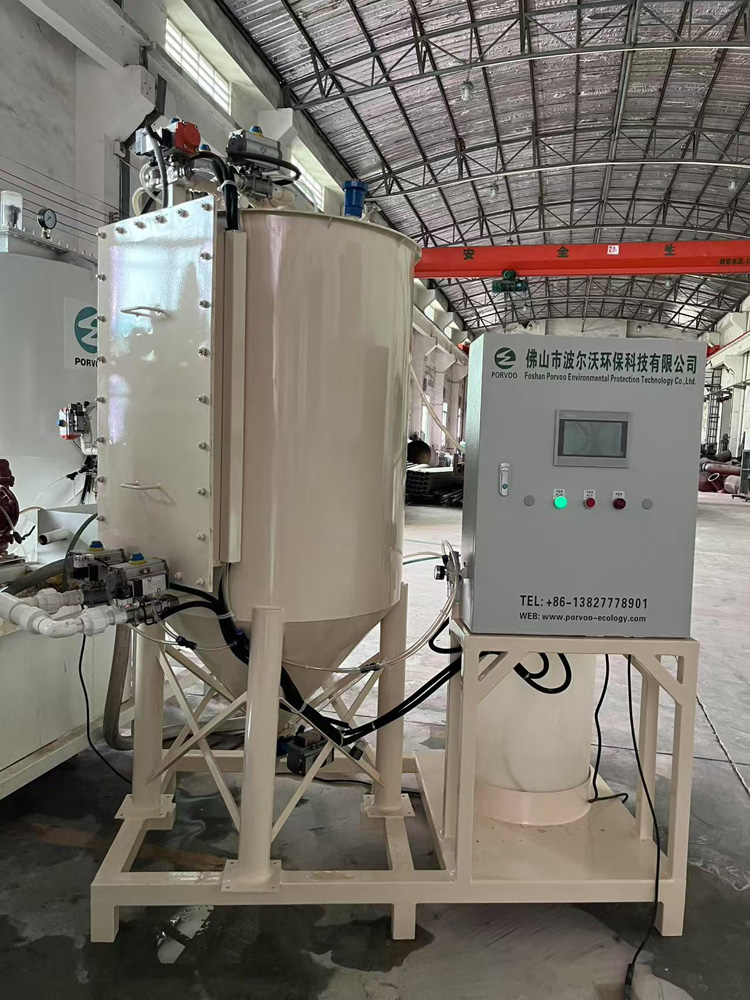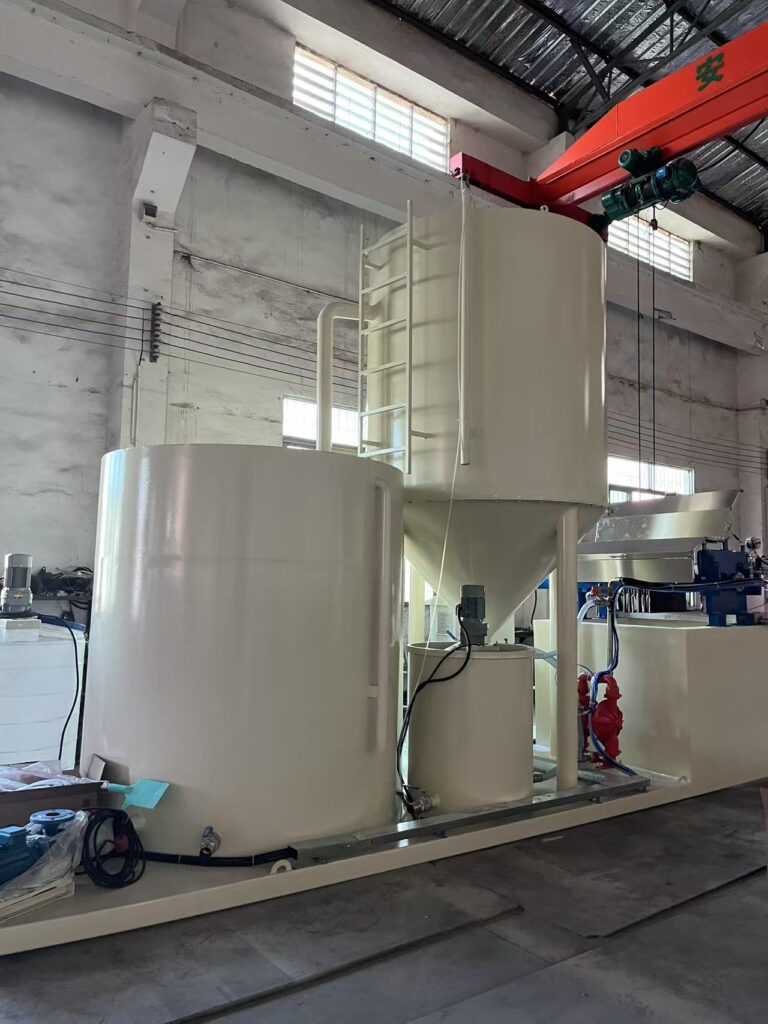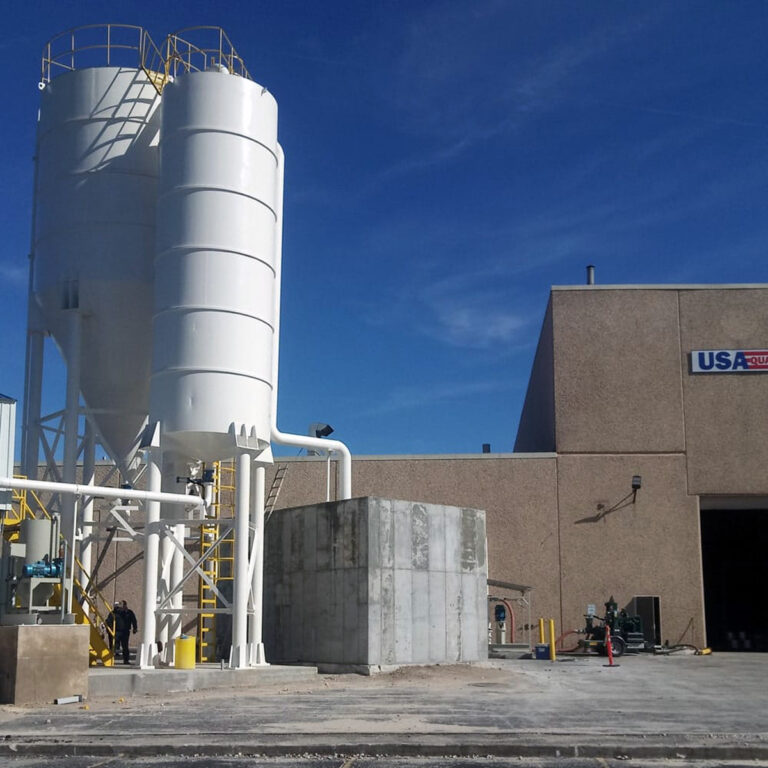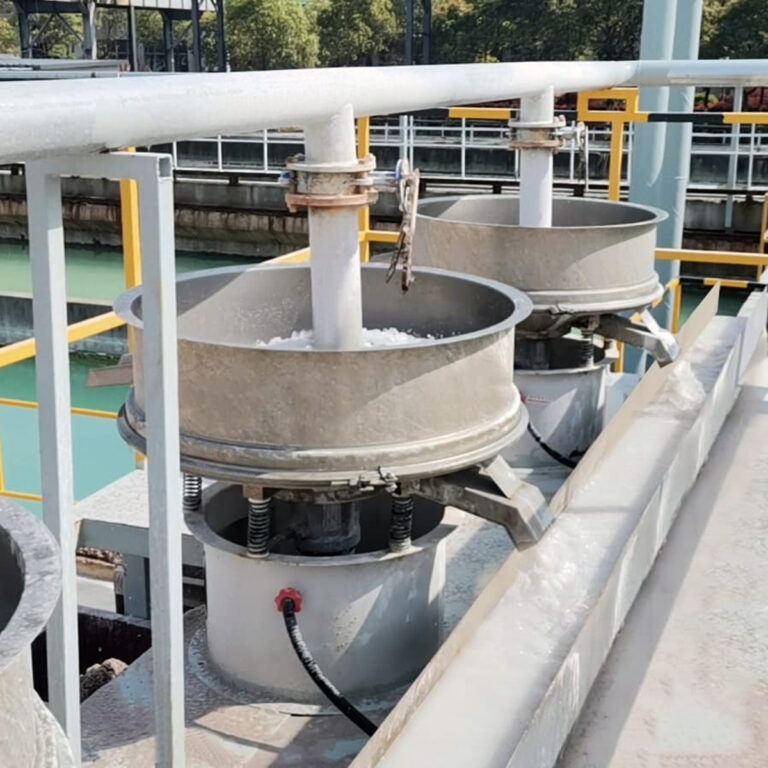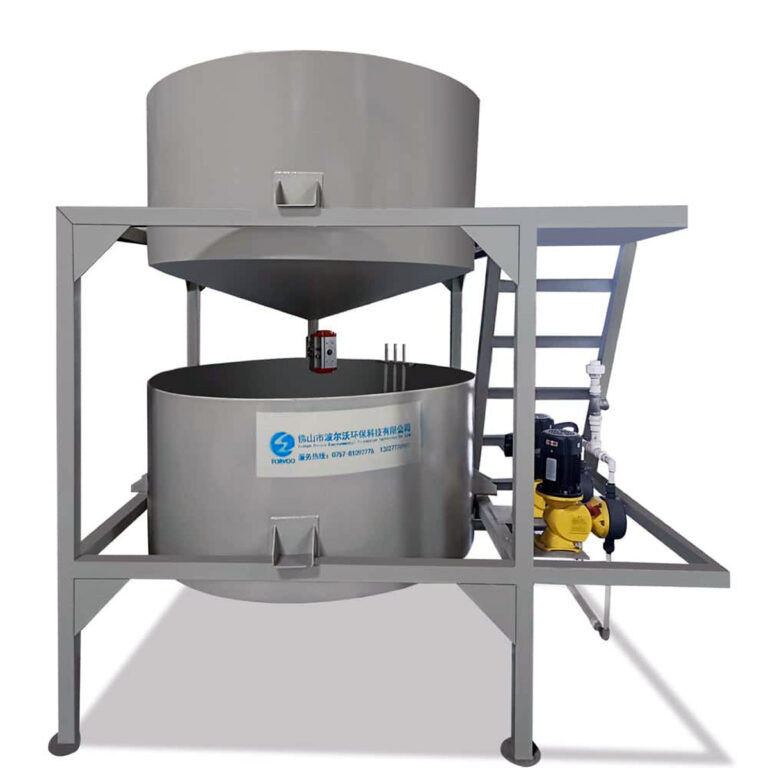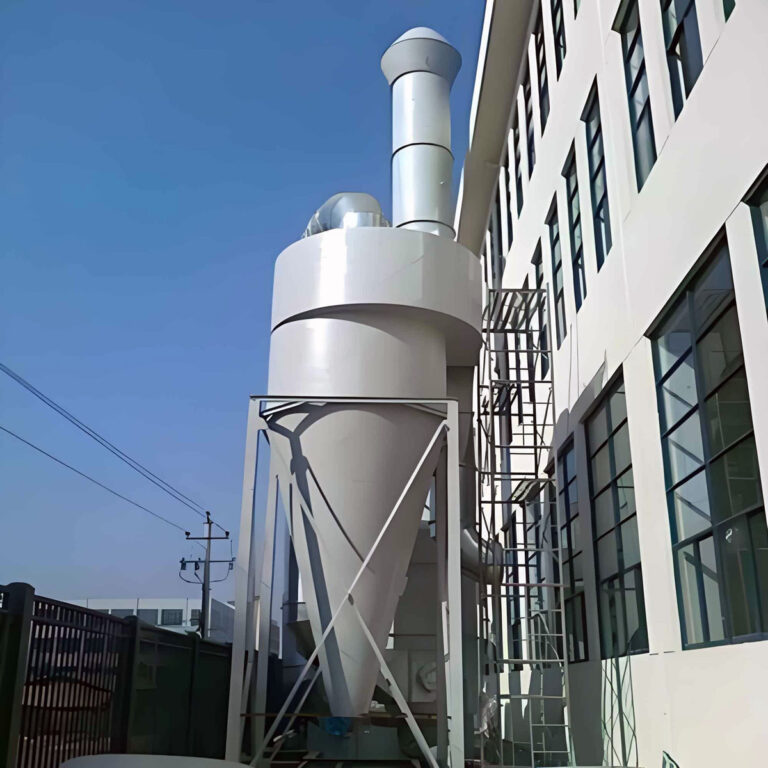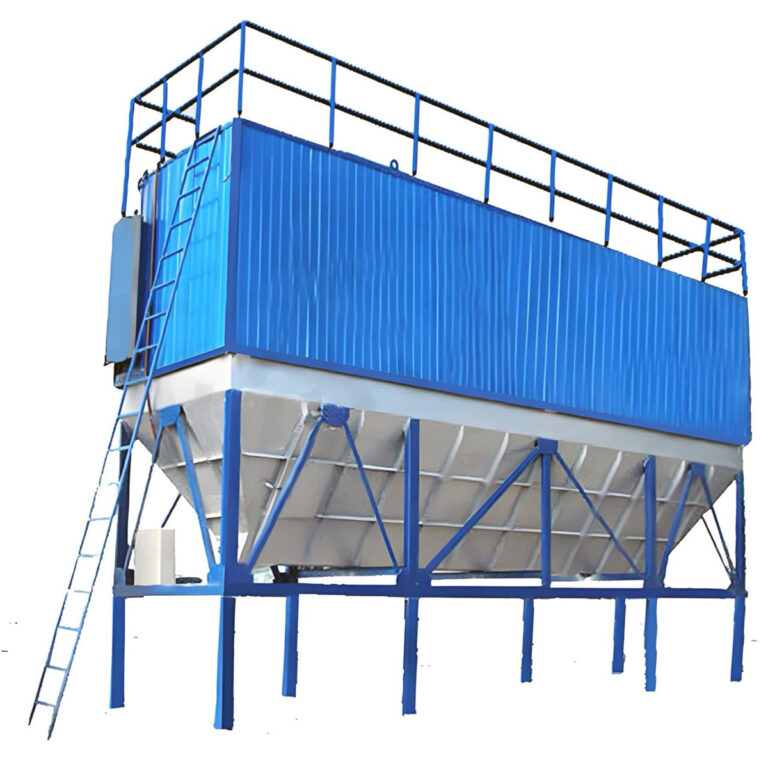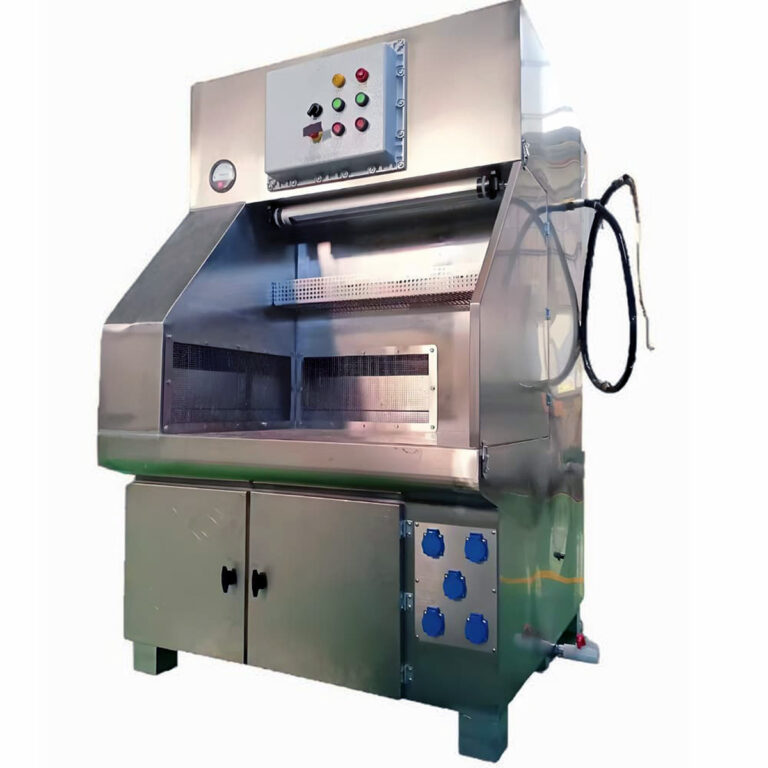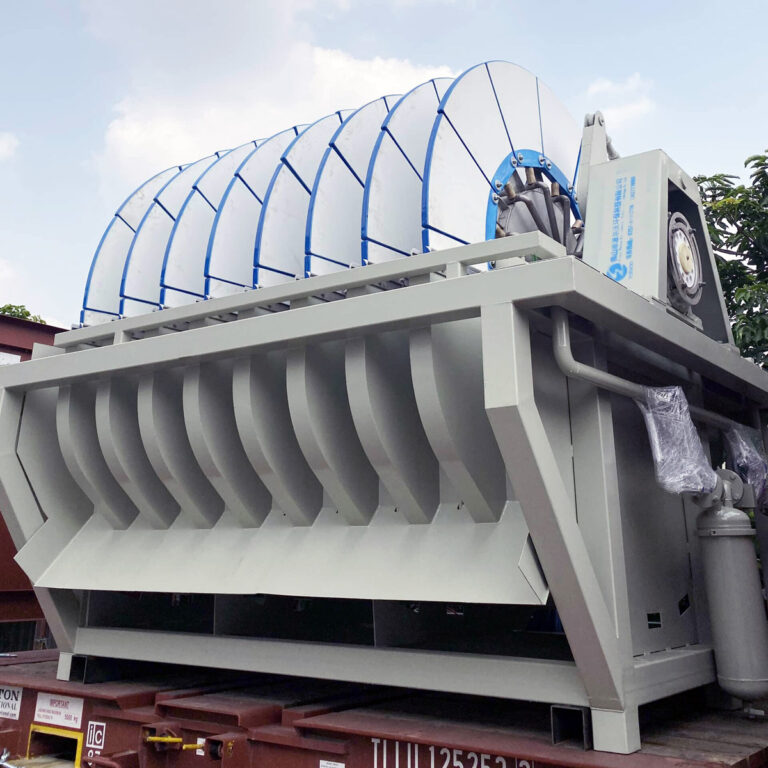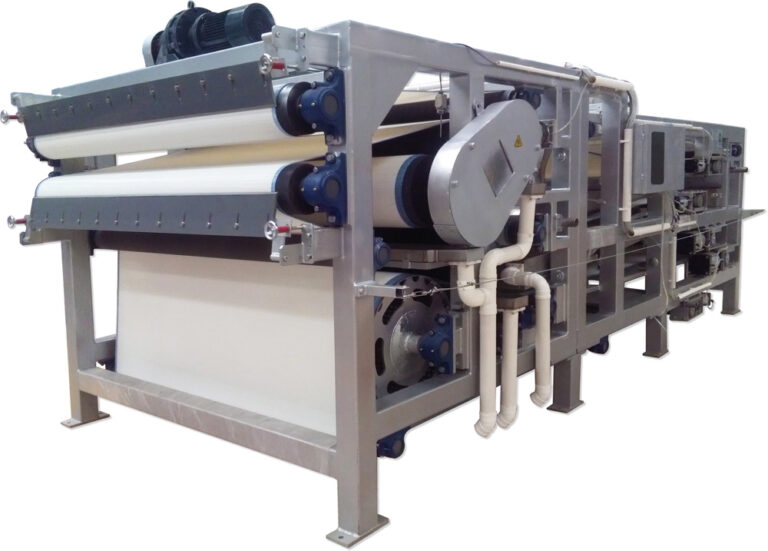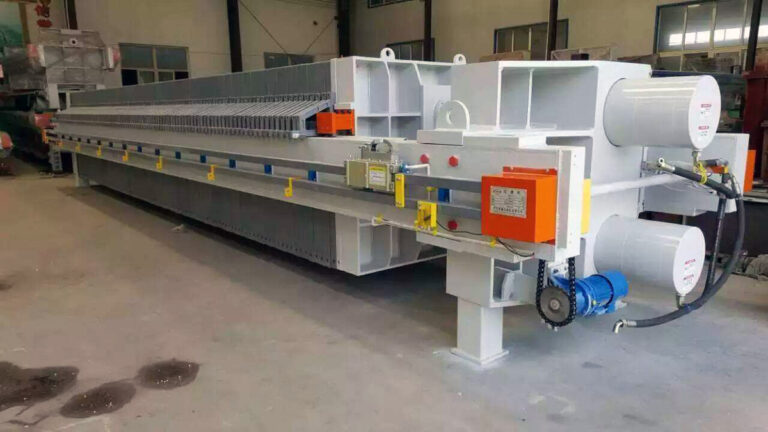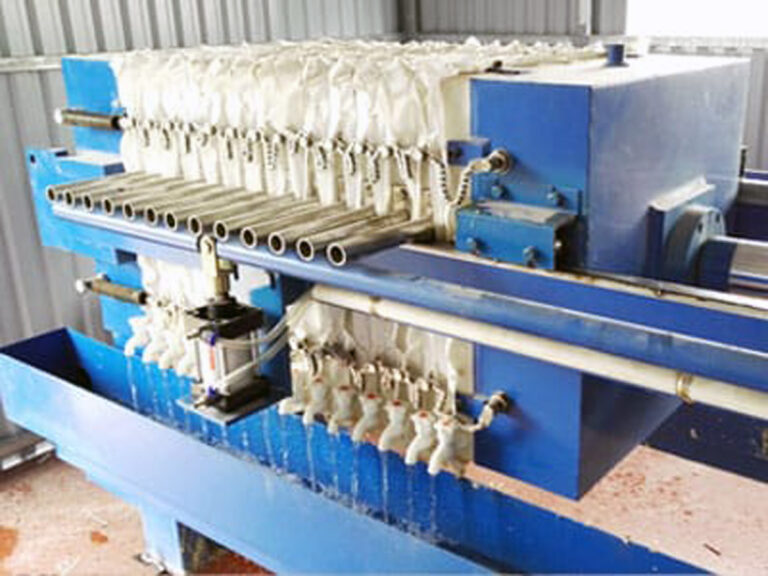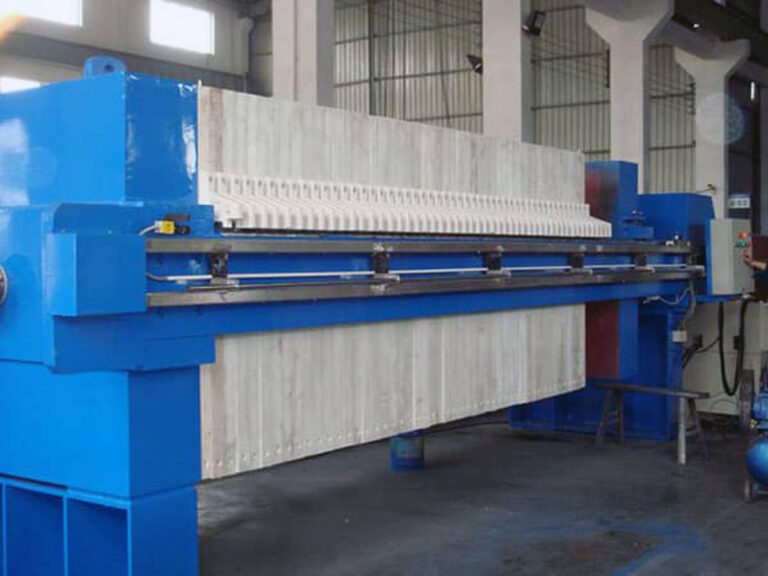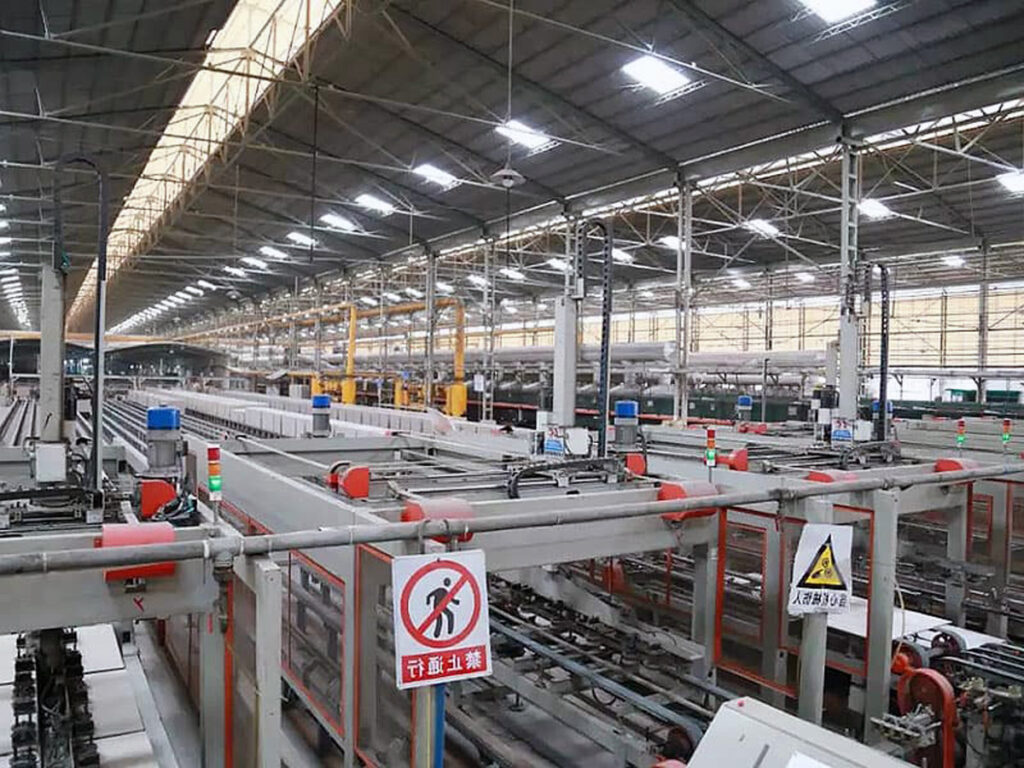Introduction to Wastewater Treatment in the Stone Processing Industry
The stone processing industry, encompassing activities from quarrying to the final polishing of marble, granite, and other dimensional stones, generates significant volumes of wastewater with unique treatment challenges. While often overlooked in discussions of industrial wastewater, these operations produce effluent loaded with suspended solids, potentially harmful metallic elements, and processing chemicals that demand specialized treatment approaches.
I recently toured a granite processing facility in Vermont where the sheer volume of water used was staggering – approximately 3-4 gallons per square foot of stone processed. What struck me wasn’t just the quantity but the distinctive cloudy, gray appearance of the wastewater, laden with fine stone particles that conventional settling simply couldn’t address efficiently.
Membrane filtration technologies have emerged as particularly promising solutions for this sector, offering the possibility of not just meeting discharge requirements but potentially enabling water reuse within the facility. However, the choice between ceramic and polymeric membrane materials represents a critical decision point that affects everything from initial investment to long-term operational success.
The stark differences between these membrane types become especially relevant when dealing with the abrasive slurries and varying pH conditions typical in stone processing. PORVOO and other technology providers have developed specialized solutions that leverage the unique advantages of different membrane materials, but selecting the optimal approach requires nuanced understanding of both the wastewater characteristics and the fundamental differences between membrane technologies.
Understanding Stone Processing Wastewater Characteristics
Stone processing wastewater presents a distinctive profile that directly influences treatment system design and membrane selection. Unlike many industrial wastewaters, the primary concern isn’t necessarily toxicity but rather the extraordinarily high loading of suspended solids – typically ranging from 1,000 to 5,000 mg/L during cutting operations and sometimes exceeding 10,000 mg/L during polishing phases.
These suspended solids consist primarily of extremely fine stone particles (often <10 μm) created during cutting, grinding, and polishing. The particle size distribution is particularly problematic, as these fine particles resist conventional settling. During a conversation with Dr. Elena Martínez, environmental engineer specializing in mineral processing wastewater, she noted: “The colloidal nature of these particles makes them especially challenging – they can remain suspended for days or even weeks without adequate treatment intervention.”
Beyond the physical characteristics, stone processing wastewater exhibits several chemical properties that impact treatment approach:
- pH variations (typically 7-10 for marble processing, potentially higher for granite)
- Presence of processing additives including polishing compounds and cutting oils
- Variable concentrations of metals depending on stone composition
- Potential presence of flocculants from previous treatment attempts
The regulatory landscape for this wastewater stream continues to evolve, with increasing focus on total suspended solids (TSS), turbidity, and in some jurisdictions, specific metals of concern. Many facilities now face strict discharge limits, with some areas prohibiting discharge altogether, necessitating closed-loop systems with high water recovery rates.
This complex matrix of physical and chemical characteristics creates a perfect testing ground for comparing ceramic versus polymeric membrane performance. The chemical-free nanofiltration system designed specifically for stone processing applications must contend with these challenges while delivering reliable, consistent performance.
Fundamentals of Membrane Filtration Technology
Before diving into the specific characteristics of ceramic and polymeric membranes, it’s essential to understand the foundational principles that govern membrane filtration processes. At its core, membrane technology relies on selective permeability – the ability to allow certain components to pass through while rejecting others.
In the context of stone processing wastewater, membranes operate primarily through size exclusion, where particles larger than the membrane pores are retained on the feed side while water and smaller dissolved substances pass through. This separation mechanism is particularly effective for the fine particulates characteristic of stone cutting and polishing operations.
The membrane filtration spectrum encompasses several classifications based on pore size:
| Membrane Type | Pore Size Range | Primary Removal Targets | Typical Applications in Stone Processing |
|---|---|---|---|
| Microfiltration (MF) | 0.1-10 μm | Suspended solids, larger bacteria | Initial filtration stage, bulk solids removal |
| Ultrafiltration (UF) | 0.01-0.1 μm | Colloids, proteins, most bacteria | Secondary filtration, water reclamation |
| Nanofiltration (NF) | 0.001-0.01 μm | Divalent ions, larger dissolved compounds | Advanced treatment, partial desalination |
| Reverse Osmosis (RO) | <0.001 μm | Most dissolved salts, small molecules | Complete water reclamation, zero liquid discharge systems |
Several key performance parameters determine membrane system efficiency:
- Flux – The volumetric flow rate per unit membrane area (typically L/m²/h)
- Rejection rate – The percentage of targeted constituents removed
- Recovery rate – The percentage of feed water converted to permeate
- Transmembrane pressure (TMP) – The pressure differential required to drive filtration
- Fouling tendency – The rate at which membrane performance declines during operation
In stone processing applications, the interplay between these parameters becomes particularly critical. High solids loading creates significant fouling pressure, while the need for consistent production requires reliable flux rates. As Dr. James Chen of the Membrane Technology Research Institute explained during an industry symposium I attended last year, “The economics of membrane selection in high-solids applications like stone processing is ultimately a question of balancing initial capital costs against operational longevity and maintenance requirements.”
This balance becomes the central consideration when choosing between ceramic and polymeric options for specific stone processing operations.
Ceramic Membrane Technology: Composition and Properties
Ceramic membranes represent the high-durability end of the filtration spectrum, composed primarily of inorganic materials such as alumina (Al₂O₃), zirconia (ZrO₂), titania (TiO₂), or silicon carbide (SiC). These materials are formed through sintering processes at extremely high temperatures (typically 1200-1600°C), creating a rigid, highly ordered pore structure.
The manufacturing process typically involves preparing a ceramic powder slurry, forming it into the desired shape (often tubular or monolithic), and then subjecting it to controlled sintering. This creates a distinctive asymmetric structure with a thin, fine-pored separation layer supported by progressively larger pores in the substrate layers. The result is a membrane with remarkable structural integrity and precisely controlled pore size distribution.
During my visit to a ceramic membrane manufacturing facility in Germany, I was struck by the precision of this process – engineers showed me how they could consistently achieve pore size variations of less than 5% across production batches, something difficult to match with polymeric alternatives.
The defining characteristics of ceramic membranes include:
- Exceptional chemical resistance – Capable of withstanding pH ranges from 0-14
- Superior thermal stability – Operational at temperatures up to 350°C (though most applications run below 100°C)
- High mechanical strength – Resistant to abrasion, pressure, and backwashing
- Extended operational lifetime – Typically 10+ years compared to 2-5 years for polymeric options
- Higher flux recovery after cleaning – Often approaching 100% recovery of initial flux values
For stone processing applications, these properties translate to several significant advantages. The abrasive nature of stone particulates can quickly damage less durable membrane materials, while ceramic membranes maintain their integrity even after years of exposure. Their resistance to harsh cleaning chemicals also allows for more aggressive cleaning protocols when dealing with severe fouling from stone processing residues.
However, these advantages come with notable tradeoffs. Ceramic membranes typically require:
- Significantly higher initial capital investment (often 3-5 times the cost of polymeric alternatives)
- More robust structural support and housing due to the weight of ceramic elements
- Specialized handling during installation and maintenance to prevent breakage
The advanced nanofiltration systems engineered for stone processing wastewater sometimes incorporate ceramic elements in critical positions where their durability justifies the higher investment, particularly in applications with especially challenging particulate characteristics or aggressive cleaning requirements.
Polymeric Membrane Technology: Composition and Properties
Polymeric (or organic) membranes stand in contrast to their ceramic counterparts, offering different operational characteristics centered around their flexible, organic chemical structure. These membranes are manufactured from a wide variety of synthetic polymers including polyvinylidene fluoride (PVDF), polyethersulfone (PES), polysulfone (PS), polyamide (PA), and cellulose acetate (CA), among others.
The manufacturing process for polymeric membranes typically involves phase inversion, interfacial polymerization, or stretching techniques. Unlike the high-temperature sintering required for ceramics, polymeric membrane production occurs at relatively low temperatures, making the manufacturing process less energy-intensive and generally more economical. This translates to lower initial acquisition costs – a factor that often drives initial selection decisions.
Working with a membrane specialist from a major European manufacturer, I learned that the versatility of polymer chemistry allows for substantial customization. “We can modify surface characteristics through various treatments to optimize for specific contaminants,” she explained while showing me membranes specifically engineered for high-solids environments like stone processing.
Key characteristics of polymeric membranes include:
- Flexibility and adaptability – Available in multiple configurations (spiral wound, hollow fiber, tubular, flat sheet)
- Lower initial capital cost – Typically 1/3 to 1/5 the cost of comparable ceramic options
- Lighter weight – Easier to handle during installation and maintenance
- Customizable surface chemistry – Can be modified for specific applications
- Lower energy footprint in manufacturing – Less energy-intensive production process
For stone processing applications, polymeric membranes offer several practical advantages:
- More economical for pilot testing and staged implementation
- Lower initial investment barrier for smaller operations
- Greater variety of module designs to fit space constraints
- Potential for application-specific surface modifications
However, polymeric membranes also present distinct limitations when applied to stone processing wastewater:
- Limited chemical resistance (especially to extreme pH)
- Temperature constraints (typically limited to below 40-60°C)
- Susceptibility to damage from abrasive particles
- Shorter operational lifespan (typically 2-5 years)
- Greater variability in performance after cleaning cycles
- Often incomplete flux recovery after fouling events
These limitations are particularly relevant in the context of stone processing applications where the comprehensive chemical-free nanofiltration system with specialized membrane technology must withstand challenging conditions while maintaining consistent performance.
Comparative Analysis: COMPARISON FORMATS Between Ceramic and Polymeric Options
When evaluating ceramic versus polymeric membranes for stone processing applications, several COMPARISON FORMATS provide valuable frameworks for decision-making. Rather than a simplistic “better or worse” analysis, these structured comparison approaches help match specific operational requirements to the most appropriate membrane technology.
The first and perhaps most comprehensive COMPARISON FORMAT involves a multi-parameter performance analysis across technical specifications:
| Performance Parameter | Ceramic Membranes | Polymeric Membranes | Significance for Stone Processing |
|---|---|---|---|
| Chemical Resistance | pH 0-14, excellent solvent resistance | pH 2-11 (typical range), limited solvent tolerance | Critical for operations using alkaline cleaners or acidic processsing aids |
| Temperature Stability | Up to 350°C | Typically limited to 40-60°C | Important when treating heated process water |
| Mechanical Strength | Excellent resistance to abrasion and pressure | Moderate to good, vulnerable to abrasive particles | Critical due to high solids content and abrasive nature of stone particles |
| Cleaning Recovery | Nearly complete flux recovery after aggressive cleaning | Partial recovery (70-90%) after gentler cleaning protocols | Determines long-term operational efficiency |
| Flux Rates | Moderate to high (50-300 LMH) | Moderate to high (30-200 LMH) | Affects system footprint and throughput capacity |
| Typical Lifespan | 10+ years | 2-5 years | Major factor in total cost of ownership calculations |
| Module Design Options | Limited (primarily tubular or monolithic) | Diverse (spiral wound, hollow fiber, tubular, plate-and-frame) | Affects system configuration and space requirements |
A second valuable COMPARISON FORMAT examines economic factors across the entire lifecycle:
The initial capital expenditure for ceramic membrane systems typically ranges from $800-1,500 per square meter of membrane area, compared to $150-400 for polymeric alternatives. However, this 3-5x cost differential must be balanced against operational considerations. When analyzing a hypothetical 100 m³/day stone processing wastewater treatment system over a 10-year period:
| Economic Factor | Ceramic System | Polymeric System | Notes |
|---|---|---|---|
| Initial Capital Cost | $380,000-520,000 | $120,000-180,000 | Includes membrane elements, housing, and peripheral systems |
| Annual Operating Cost | $28,000-35,000 | $32,000-45,000 | Electricity, cleaning chemicals, maintenance labor |
| Membrane Replacement Cost | None (within 10-year horizon) | $70,000-120,000 (2-3 replacements) | Major factor in long-term economics |
| Downtime Costs | 1-2 days annually | 3-7 days annually | Production losses during maintenance |
| 10-Year Total Cost of Ownership | $660,000-870,000 | $510,000-750,000 | Gap narrows significantly over time |
| Cost per m³ Treated | $1.80-2.40 | $1.40-2.05 | Ceramic becomes more competitive with scale and time |
A third COMPARISON FORMAT that proves particularly relevant for stone processing applications evaluates application suitability based on specific wastewater characteristics:
| Wastewater Characteristic | Better Membrane Option | Reasoning |
|---|---|---|
| High abrasive particle content (>2000 mg/L) | Ceramic | Superior mechanical durability prevents premature failure |
| Wide pH variations (pH 4-11) | Ceramic | Better chemical stability across the entire range |
| Moderate solids (<1000 mg/L) with consistent pH | Polymeric | Lower cost option sufficient for less demanding conditions |
| High temperature process water (>45°C) | Ceramic | Polymeric membranes may degrade at elevated temperatures |
| Requirement for frequent and aggressive cleaning | Ceramic | Can withstand stronger chemicals and higher pressure backwashing |
| Limited capital budget with moderate wastewater challenge | Polymeric | More economical initial investment |
| Need for specialized module configurations | Polymeric | Greater variety of available module designs |
During my consultation with a marble processing facility in Italy, I utilized these COMPARISON FORMATS to guide their decision-making process. Their particularly abrasive wastewater with high calcium carbonate content led us toward a hybrid approach – using ceramic membranes for the initial filtration stage where abrasion was most severe, followed by polymeric elements for the final polishing stage where conditions were less demanding.
The innovative nanofiltration system designed specifically for stone processing wastewater treatment incorporates these considerations into its design, often recommending application-specific membrane configurations based on detailed wastewater characterization.
Real-world Applications and Case Studies
The theoretical comparisons between ceramic and polymeric membranes gain practical relevance through examination of actual implementations. I’ve had the opportunity to study several installations across different stone processing operations, revealing nuanced performance patterns that inform membrane selection.
A granite processing facility in Georgia (USA) installed a ceramic membrane ultrafiltration system in 2018 to treat wastewater from their cutting and polishing operations. Their wastewater presented particularly challenging characteristics:
- TSS concentrations frequently exceeding 3,500 mg/L
- High hardness (>400 mg/L as CaCO₃)
- Significant oil and grease content from cutting operations
- pH fluctuations between 7.2 and 10.5
After three years of operation, their ceramic membrane system demonstrated remarkable consistency – maintaining 98.5% of initial flux rates with cleaning intervals extended to quarterly cycles. The facility manager remarked, “The initial sticker shock was substantial, but we haven’t had to replace a single membrane element in three years. Our previous polymeric system required replacement after just 14 months.”
In contrast, a marble processing operation in Vermont took a different approach. With more moderate TSS loading (typically 800-1,200 mg/L) and consistent pH levels, they opted for a polymeric PVDF membrane system. Their experience highlights both the advantages and limitations of this approach:
“We saved about $200,000 on the initial installation compared to ceramic quotes,” the operations director told me. “We’ve had to replace membrane elements once in the past three years, but even with that cost, we’re still ahead financially.” However, he noted increasing cleaning frequency – from monthly initially to bi-weekly currently – suggesting gradual, irreversible fouling that ceramic alternatives might have avoided.
A particularly instructive case comes from a stone fabrication shop in California that implemented a hybrid system. They installed ceramic membranes for their primary filtration train handling the most challenging wastewater directly from cutting operations, followed by polymeric membranes for secondary treatment and polishing. This strategic deployment aligns each membrane type with the conditions where it excels:
“The ceramic elements handle the brunt of the solids loading where their durability really matters,” explained their environmental engineer. “The polymeric units handle the cleaner water downstream where fouling is less severe and their lower cost makes more sense.”
The specialized stone processing wastewater treatment system with advanced nanofiltration technology follows similar principles, matching membrane types to specific treatment stages based on wastewater characteristics.
Performance data from these installations reveals telling patterns:
| Performance Metric | Ceramic Installation | Polymeric Installation | Hybrid System |
|---|---|---|---|
| Initial Permeate Flux | 85-120 LMH | 90-130 LMH | 90-125 LMH |
| Flux After 1 Year | 75-110 LMH (88% retention) | 65-100 LMH (72% retention) | 75-115 LMH (85% retention) |
| TSS Removal Efficiency | >99.5% | >99% | >99.5% |
| Cleaning Frequency | Quarterly | Bi-weekly to Monthly | Monthly (ceramic), Bi-weekly (polymeric) |
| Energy Consumption | Higher (15-20%) | Lower | Moderate |
| Operational Intervention Required | Minimal | Moderate to High | Low to Moderate |
| Water Recovery Rate | 90-95% | 85-92% | 90-95% |
These real-world results underscore that the optimal choice depends heavily on site-specific factors including wastewater characteristics, operational priorities, and economic constraints. The decision framework must consider not just current conditions but anticipated changes in production volumes, regulatory requirements, and water management goals.
Optimization Strategies and Future Developments
The future of membrane technology for stone processing wastewater treatment points toward increasingly specialized solutions that maximize the advantages of both ceramic and polymeric materials. Several optimization strategies have emerged from both research and practical implementation.
Pre-treatment optimization represents perhaps the most significant opportunity to enhance membrane performance regardless of material selection. Advanced prefiltration systems using cyclonic separators, specialized coagulation techniques, or dynamic screens can dramatically reduce the solids loading reaching the membrane surface. During a recent project consultation, I observed how implementing a two-stage hydrocyclone system reduced membrane fouling rates by over 60%, extending cleaning intervals from weekly to monthly.
Membrane surface modifications represent another promising development path. Recent advances in ceramic membrane technology include:
- Incorporation of photocatalytic materials like nano-TiO₂ for organic contaminant degradation
- Hydrophilic surface treatments to reduce organic fouling adhesion
- Hierarchical pore structures that maintain flux while improving selectivity
For polymeric membranes, emerging innovations include:
- Nanocomposite formulations incorporating ceramic nanoparticles for enhanced durability
- Anti-fouling polymer chemistries with zwitterionic or amphiphilic properties
- Self-healing membrane materials that can recover from minor damage
Operational optimization strategies are equally important. Advanced monitoring systems using artificial intelligence algorithms can now predict fouling events before they occur, allowing proactive intervention. One system I evaluated used pressure differential patterns to forecast cleaning requirements 48-72 hours in advance, reducing both downtime and cleaning chemical usage.
Hybrid membrane configurations are likely to become increasingly common. These systems strategically deploy ceramic membranes where their durability justifies the cost (typically in high-solids, abrasive environments) while using polymeric membranes where conditions are less demanding. This approach optimizes capital expenditure while still benefiting from ceramic durability where it matters most.
The emerging circular economy perspective is also influencing membrane selection. Some operations now factor in end-of-life considerations – ceramic membranes can potentially be recycled into other ceramic products, while some polymeric membranes present disposal challenges. As one sustainability director told me, “We’re increasingly looking at the full lifecycle environmental footprint, not just operational parameters.”
For stone processing operations evaluating membrane systems today, these developments suggest several practical recommendations:
- Consider pilot testing both membrane types with your actual wastewater before making final decisions
- Evaluate hybrid configurations that might offer the best of both approaches
- Factor in expected regulatory changes and potential water reuse opportunities
- Calculate total lifecycle costs rather than focusing solely on initial investment
- Investigate the latest developments in specialized stone processing wastewater treatment technologies with optimized nanofiltration capabilities designed for your specific application
Conclusion: Making the Right Selection for Your Operation
The comparison between ceramic and polymeric membranes for stone processing wastewater treatment reveals there is no universal “best” option – only the most appropriate solution for specific operational contexts. This nuanced understanding becomes crucial when making significant investment decisions that will impact operational efficiency for years to come.
The evaluation framework should begin with a comprehensive characterization of your specific wastewater stream. The extreme variability in stone processing wastewater – from marble facilities with high calcium carbonate content to granite operations with silica-rich effluent – necessitates customized approaches rather than generic solutions.
For operations processing highly abrasive materials with significant pH fluctuations and high cleaning requirements, the durability advantages of ceramic membranes often justify their higher initial investment. The long-term economic analysis frequently favors ceramic options when factoring in replacement costs, maintenance requirements, and production continuity.
Conversely, facilities with more moderate wastewater characteristics – lower solids loading, consistent pH, and less abrasive particulates – may find polymeric membranes offer the most cost-effective approach. Their lower initial cost and satisfactory performance under these conditions can provide excellent value, particularly for smaller operations with capital constraints.
Many facilities are finding that hybrid approaches offer the optimal balance – leveraging ceramic durability for primary treatment stages while benefiting from the economy of polymeric options in secondary or polishing applications. This strategic deployment of technologies creates systems that are both technically effective and economically sound.
Beyond the membrane material itself, success depends equally on system design, operational protocols, and maintenance practices. Even the most durable ceramic membrane will underperform without proper pre-treatment, while well-maintained polymeric systems can exceed typical lifespan expectations with optimized operating conditions.
The evolving regulatory landscape adds another dimension to this decision. As water discharge requirements become increasingly stringent and water reuse becomes more economically attractive, the higher rejection rates and consistent performance of advanced membrane systems become even more valuable. Forward-thinking operations are designing today’s systems with tomorrow’s requirements in mind.
Ultimately, the optimal approach emerges from thorough analysis of your specific conditions, priorities, and constraints. Working with experienced technology providers who understand both ceramic and polymeric options – rather than those committed to a single technology path – offers the best route to a truly optimized solution for your stone processing wastewater challenges.
Frequently Asked Questions of COMPARISON FORMATS
Q: What are comparison formats and why are they important in analyzing ceramic vs. polymeric membranes?
A: Comparison formats are structured ways to present and evaluate differences and similarities between two or more items, such as ceramic and polymeric membranes. They play a crucial role in clearly highlighting performance, cost, durability, and treatment efficacy differences in wastewater treatment applications. Using effective comparison formats helps stakeholders quickly grasp key aspects and make informed decisions based on objective data organization, enhancing understanding of membrane suitability for stone processing wastewater treatment.
Q: Which comparison formats are best suited for showcasing technical differences between ceramic and polymeric membranes?
A: The best comparison formats for technical evaluation include:
- Side-by-side tables that list membrane properties like permeability, fouling resistance, and lifespan.
- Comparison matrices highlighting key performance indicators and operational costs.
- Infographics or quadrant layouts showing pros and cons visually.
These formats enable a clear, concise view of critical technical features that affect membrane choice in industrial wastewater treatment scenarios.
Q: How can visual comparison formats improve the communication of membrane treatment benefits in wastewater management?
A: Visual comparison formats such as charts, infographics, and bubble diagrams enhance communication by:
- Simplifying complex data into digestible visuals.
- Using colors and icons to differentiate membrane types and attributes.
- Highlighting significant statistics like pollutant removal rates or durability scores.
This approach makes technical content accessible to both technical and non-technical audiences, facilitating quicker comprehension of ceramic vs. polymeric membrane advantages.
Q: What are common challenges when using comparison formats for membrane technologies, and how can they be overcome?
A: Challenges include information overload, visual clutter, and biased presentation. To overcome these, it is essential to:
- Use clean, minimalistic formats focusing on the most relevant data points.
- Limit the number of comparison criteria to reflect practical decision factors.
- Employ consistent scales and unbiased metrics to ensure fair evaluation.
- Balance textual explanation with visuals to maintain clarity without oversimplification.
Q: Can comparison formats assist in environmental impact assessment between ceramic and polymeric membranes?
A: Yes, comparison formats can effectively showcase environmental impact by contrasting factors such as energy consumption, chemical usage, membrane lifespan, and waste generation. Structured tables or environmental matrices help quantify and compare these ecological indicators, supporting sustainability assessments. These formats guide stakeholders in selecting membranes that align with environmental goals in treating stone processing wastewater.
Q: How do advanced comparison formats incorporate real-time data for evaluating membrane performance?
A: Advanced formats may integrate dynamic dashboards or interactive charts allowing real-time data updates on parameters like flux rate, fouling levels, and cleaning frequency. This enables continuous performance monitoring of ceramic and polymeric membranes, fostering proactive maintenance and optimization. Such formats support data-driven decision-making by reflecting operational changes and trends clearly and immediately.
